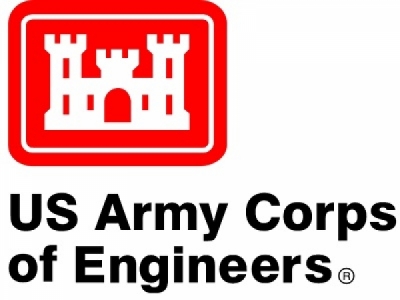
Posted on September 3, 2020
VICKSBURG, Miss. – In this episode of the Engineering With Nature® Podcast, guest Jeff Corbino, environmental resources specialist with the U.S. Army Corps of Engineers (USACE) New Orleans District, shares several examples of Engineering With Nature (EWN) to restore coastal marsh habitat as a key part of the district’s navigation mission.
Corbino is the environmental function chief for the district’s Operations Division Technical Support Branch that supports the district’s navigation mission through maintenance of waterways throughout southern Louisiana, including the dredging of 80 million cubic yards of sediment to operate this vital navigation network.
Corbino and his colleagues have been doing groundbreaking work applying EWN principles and practices using dredged sediment to create riverine islands that provide both environmental and engineering benefits.
For example, dredged sediment was used to expand a naturally occurring sandbar that was developing in the Horseshoe Bend segment of the Atchafalaya River, Louisiana. By adding dredged material upstream, Corbino and his team accelerated the transformation of the sandbar into an island, partnering with the river to create new, sustainable habitat, and engineering value that reduces future work and cost. As Corbino discusses, they “let the river do the heavy lifting.”
Corbino and his colleagues worked with scientists and engineers at the U.S. Army Engineer Research Development Center (ERDC) in Vicksburg, Mississippi, to quantify the benefits of the project. They have received four awards for environmental excellence and adaptation to climate change from the Western Dredging Association, Dredging and Port Construction Magazine, U.S. Army Corps of Engineers, as well as international recognition.
Corbino discusses the key learnings from Horseshoe Bend and how they are being applied to current projects, including a major diversion in West Bay, Louisiana, where dredged material is being used opportunistically in concert with the diversion’s power to accelerate the restoration of wetlands.
Demonstrating the triple-win benefits of EWN projects of this kind provides an opportunity to expand and extend what is being learned to other projects within the district, to other districts and to other project leaders outside the USACE.
Engineering With Nature Podcast Series
? New episode posted each Wednesday from Aug. 26 to Oct. 28, 2020
? Download or stream for free through:
? EWN website
? Apple Podcasts
? Average length: 20 – 25 minutes
? Listen to the trailer on the EWN website — www.engineeringwithnature.org
About Engineering With Nature
Engineering With Nature (EWN) is defined as the intentional alignment of natural and engineering processes to efficiently and sustainably deliver economic, environmental and social benefits through collaboration.
Initiated in 2010 by a team of U.S. Army Corps of Engineers (USACE) scientists and engineers, EWN seeks to enable and support more sustainable water and infrastructure development practices, projects and outcomes by integrating engineering and natural processes. There is a growing interest in nature-based solutions worldwide, and EWN approaches provide a means for delivering those solutions across USACE’s missions, including navigation infrastructure, flood risk management, ecosystem restoration and beyond. The collaborations and partnerships developed through the EWN initiative have expanded knowledge sharing and application across government, the private sector, non-governmental organizations and academia in the U.S. and internationally.
Sustainable development of infrastructure projects presents both challenges and opportunities. Practical approaches are needed to better understand and combine natural and engineered systems, where the desired outcome is more socially acceptable, economically viable and environmentally sustainable projects. This is a goal shared by the USACE, its partner organizations, stakeholders and the public. For more information, please visit our website at: www.engineeringwithnature.org.
Source: dvidshub.net





